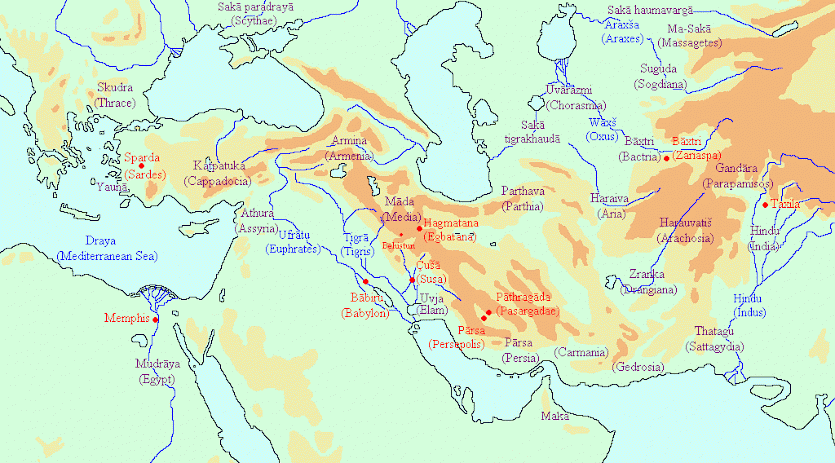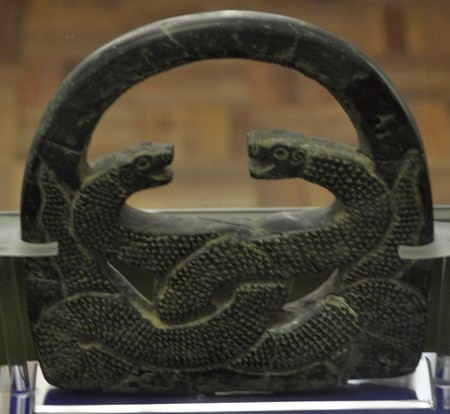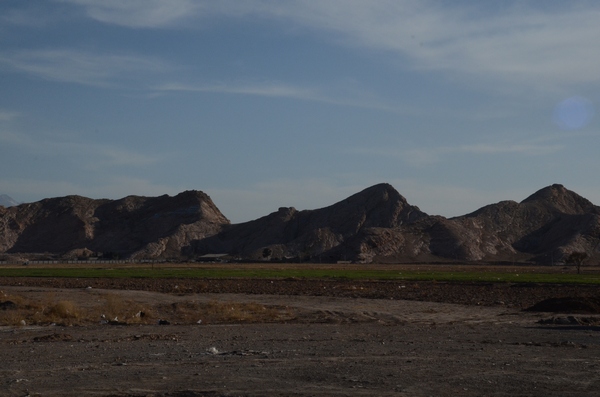Carmania
Q1734044Carmania (Old Persian Karmanâ): name of a region in ancient Iran, between the heartland of Persia and Gedrosia.

The northern part of Carmania, the Dasht-e Lut, "Desert of Emptiness", was and is extremely poor. The southern half, on the other hand, was considered to be very fertile by the Greeks; in an instant, we will see why. The river Hyctanis contained gold and there were silver mines.
The Greeks called its most important city Harmozia; its Persian name may have contained the name of the supreme god Ahuramazda. Today, this town is best known as Hormuz, but its real name is Mînâb.

Archaeological finds from Carmania prove that civilization started already in the third millennium BCE, but for the moment, this Jiroft Culture remains an isolated civilization. The Late Bronze Age and Early Iron Age are virtually ununderstood.
Later, it was part of the Achaemenid empire. The country must have been conquered by Cyrus the Great, the founder of this empire, who ruled 559-530. However, the ancient Persian lists of subject countries ignore Carmania. The Behistun inscription of king Darius I the Great and the Daiva inscription of his son Xerxes, which both contain long lists of countries subjected to the Persian ruler, do not mention Carmania. This suggests that administratively, the region belonged to the satrapy of Gedrosia or was reckoned to be a part of Persia proper.
Carmania is mentioned for the first time in an inscription from Susa known as DSz, as exporter of yakâ wood - probably teak-wood. From the tablets of Persepolis, we know the name of one of the first governors in charge, Karkiš. (He is not called a satrap.) It is also clear from the Persepolis archive, that there was a royal road through Carmania.
At an unknown moment in the late fifth or early fourth century, Carmania must have received the status of satrapy, because we know that the Macedonian king Alexander the Great first reappointed the old satrap Astaspes and later - when he passed through the region - killed him. He choose in quick succession candidates that were more to his liking, Sibyrtius and Tlepolemus (winter 325/324 BCE). During his stay in Carmania, Alexander founded a town for his veterans, which he called Alexandria (which may or may not be identical to modern Golâshkerd).
Alexander arrived in Carmania from the east; he and his men had traveled through the Gedrosian desert, which had cost many people their lives. When the Macedonian soldiers reached southern Carmania, they found food again ("all crops were born in abundance, except for olives", according to Alexander's admiral Nearchus). Consequently, Greek and Roman geographers wrote that Carmania was extremely fertile, which is exaggerated.

After the death of Alexander, Carmania became first part of the Seleucid empire, but in the middle of the second century, it was subjected by the Parthians. In the first quarter of the third century CE, their empire fell; the Persians founded a new empire after 224. The capital of Carmania was moved to Veh-Ardašir, "the good city of Ardašir", a new town between the salty Dasht-e Lut and the western mountains, now known as Kermân.
The first Christian bishop can be dated in the middle of the seventh century, shortly before or after the Muslims took over (646).